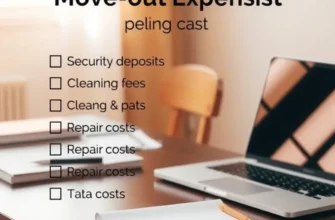Navigating the landscape of renting can often feel overwhelming, especially for young professionals, first-time renters, students, couples, and families. One common source of confusion arises from rental property damage charges. What can landlords charge you for? How can you avoid unexpected fees? Understanding your responsibilities and rights as a renter is crucial for maintaining a positive relationship with your landlord and protecting your finances. This guide will clarify the type of damages landlords may charge for, how to document your property’s condition, and what steps to take if you feel a charge is unfair. With a bit of clarity, you can approach renting with confidence and ensure your rights are respected throughout your leasing experience. Whether it’s about wear and tear, accidental damage, or misunderstandings, getting informed can empower you as a tenant.
What Are Rental Property Damage Charges?

Understanding rental property damage charges begins with distinguishing between what is considered normal wear and tear versus actual damage. As a tenant, recognizing this difference is crucial for maintaining a healthy relationship with your landlord and safeguarding your security deposit.
Normal wear and tear refers to the expected decline in the condition of a property over time due to regular use. Examples include minor scuff marks on walls, faded paint, or doors that might not close as smoothly as they once did. By contrast, actual damage results from negligence or misuse and is typically chargeable. It includes broken windows, stained carpets from spills, or holes in walls.
Landlords have the right to charge tenants for repairs that go beyond normal wear and tear. Common issues that may result in charges include excessive dirt or grime left behind, missing or damaged fixtures, significant nail holes, and unauthorized paint jobs. Being clear on these standards can help tenants take better care of their rented homes.
It’s also imperative for renters to carefully document the condition of their rental unit both when moving in and moving out. Create a detailed checklist and take photographs or videos to support your claims. This documentation serves as proof of the property’s original condition and can be indispensable in disputes over damage charges. For a comprehensive guide on how to secure your deposit back, consider reviewing this resource on getting your deposit back.
To prevent issues from escalating, report damages promptly. When new damage occurs, inform your landlord immediately in writing. Maintaining a transparent line of communication shows your willingness to cooperate and address matters responsibly.
A proactive approach to maintenance can also reduce potential charges. Regular cleaning, using protective pads on furniture to avoid floor scratches, and quickly addressing minor repairs can go a long way. Additionally, know whether your lease offers clauses on handling specific types of damage—often, there might be obligations or allowances for certain improvements.
Unfortunately, misunderstandings about damage often lead to conflicts and financial burdens on tenants. These can easily be avoided by clearly understanding what a landlord might rightfully charge you for, coupled with thoughtful documentation and proactive maintenance. By being diligent, new renters can enjoy their homes without unexpected costs.
Preventing Damage Charges: Best Practices for Renters

To minimize damage charges, it’s crucial to document the condition of your rental property from day one. Start by taking detailed photos of every room. Capture any existing damage, no matter how minor. These photos serve as your baseline for comparison at move-out. Make sure the images are clear and time-stamped, proving their validity.
When you move in, complete a checklist that includes all noteworthy aspects of the property. Consider items like the condition of walls, floors, appliances, and fixtures. Many landlords provide a checklist, but it’s wise to create your own if they don’t. Make notes about items that appear worn or in need of repair, and share this list with your landlord immediately. Doing so establishes awareness of existing issues and can prevent future disputes.
Maintaining your rental unit is essential to avoid unexpected charges. Simple tasks like regularly cleaning your living spaces and checking for leaks can make a significant difference. Inspect plumbing for any signs of wear and tear; report any leaks promptly to avoid water damage. Likewise, check smoke detectors and lighting fixtures to ensure they’re functioning correctly.
Effective communication with your landlord is key in maintaining a harmonious relationship and ensuring repairs are handled quickly. If an issue arises, report it in writing. An email can serve as both a notice and a record. Always stay polite and clear about the problem and the urgency while suggesting possible times for a repair appointment.
Being proactive is not just about handling damage or repairs. It’s also about securing your interests in potential disputes. If you receive an unjust damage charge, it’s critical to approach the situation systematically. Gather all documentation: your initial photos, checklists, and communications with the landlord. Present this evidence in a reasonable manner to contest the charge.
If informal resolution doesn’t work, you might consider mediation or small claims court. Knowing your rights as a tenant allows you to effectively navigate these challenges. For more information on tenant rights, such as privacy issues, you may want to explore guides on tenant privacy rights.
Securing your financial interests as a renter doesn’t only involve anticipating potential problems but also taking tangible steps to prevent them. By being vigilant and prompt in handling property maintenance and documentation, you contribute to a better living experience and peace of mind.
Final words
Understanding rental property damage charges is crucial for renters who seek financial clarity and peace of mind. By recognizing what constitutes damage, adhering to best practices for documentation, and maintaining open communication with landlords, you can confidently navigate your leasing experience. Remember, being proactive in assessing your rental’s condition not only fosters a smooth rental process but also protects your hard-earned money. Empower yourself with the knowledge necessary to avoid unnecessary charges, and ensure your time as a renter is enjoyable and stress-free.









